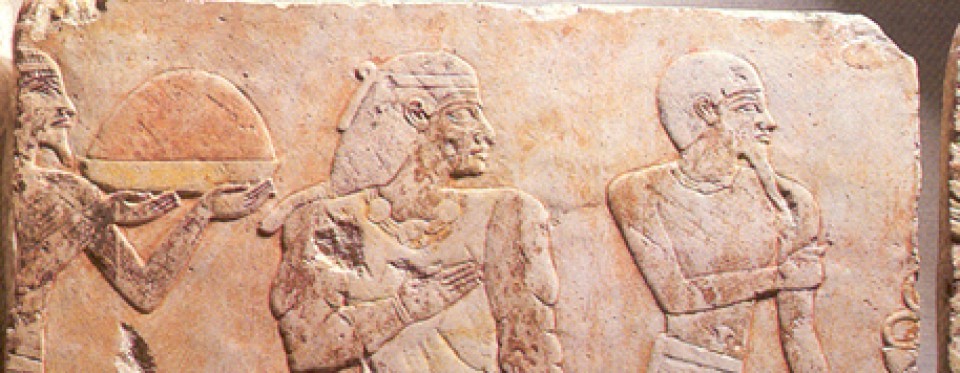When I hold my love close, and her arms steal around me, I’m like a man translated to Punt … when the world suddenly bursts into flower.
Ancient Egyptian love song
Nubia was the ancient land known as Kush in what is present-day Sudan. The ancient Land of Punt originally encompassed what is now known as Eritrea, Ethiopia and Somalia.

At the height of its glory, the Land of Punt was a prestigious commerce, military and economic center, and had a profound effect on the culture of the Egyptians.
Nubia also had a great influence on Egypt. Even the way the Nubians wore their hair was copied by the Egyptians.
Abu Simbel was originally located in Nubia.
The facial features of the smaller statues at the feet of Ramses II are Nubian, even in the hairstyles (some of which were a type of Afro as well as braided hairstyles similar to what Black American women wear) was a beauty that the queens of Egypt wanted to be in the afterlife. Nubians, in ancient Egyptian texts, were referred to as a sign of beauty. One of the Egyptian lyrics went:
“I wish my lover was a Nubian.”

As a nation, the Land of Punt was the source of trade in items that could be found nowhere else but in Africa; ebony (black wood), ivory (from elephants), baboons, gold, myrrh and frankincense (two aromatic woods that are mentioned in the Bible).

Two Somali young men with a day’s collection. Frankincense is collected in mountain regions.
Frankincense and myrrh were cultivated from tree resins. Frankincense was a very expensive commodity and was heavily traded in ancient times from Nubia, the Land of Punt, Egypt, Rome, and into the Middle East. It was used as a perfume, for medicinal treatments and as an incense.
Myrrh, slightly less expensive, was still a valued commodity that was in demand. It was used to perfume clothing, as an incense, and for embalming.

The frankincense tree grows in arid regions of the Horn of Africa (Ethiopia and Somalia). The tree’s amber-colored resin, collected through an incision in the bark.

In what is now Sudan and South Sudan, Kush/Nubia flourished along the White Nile, Blue Nile and Atbara River. Some of its principal cities were Meroe (city of the great Nubian pyramids, city of the oldest college in Africa for 2,000 years), Kerma (Nubia’s first capital–a 5,000 year old African city–built before Stonehenge), and Musawarrat es Sufra. Some of Nubia’s religious temples are much older than the Parthenon.

A decade ago, there was an archaeological excavation in progress that was unearthing a city that the ruins indicated was 5,000 years older than the pyramids of Giza–making the site the oldest city in Africa. And in 2002, the remains of a palace and a colonnade built more than 2,000 years ago by the greatest black civilization ever were discovered.
Nubia also had prominent Nubian queens whose courage, command of their people, and tenacity in ruling and in battle, gave them a goddess-like stature in the eyes of both their people, allies, and enemies.
A Nubian Princess in her ox-chariot, from the Egyptian tomb of Huy, 1320 BC.
One such queen was Kandace Amanirenas of Meroe.
An historian of the time stated that “This queen had courage above her sex”.
She led her armies into battle and defeated three Roman cohorts, defacing a statue of Emperor Augustus, bringing the head of the statue back to Nubia as a prize. The head was buried in the doorway of an important building as the final act of contempt and disrespect.
The divine right of king passed from god to ruler, leaving no room for a maternal ruler. On the other hand, Nubian queens are often portrayed at the event of divine birth.

The Goddess Hathor. Sculpture, Egypt, 1320-1200 BC, 18TH Dynasty.

Fragment of Relief
Painted and gilded stucco.
This representation of the queen, shows the sumptuous jewelry adorning her neck and arms. The entire figure was covered with gold foil, while the background was painted blue, creating the illusion of a faience tile. (To read about faience tile, click here.) The queen holds a decorative collar with both hands, and a mirror with one; both objects are intended as offerings for a missing deity standing to the left.
Her successor was her daughter, Amanitore, who was mentioned in the Bible (Acts 8:27).


The Egyptians called the Land of Punt Ta netjer, “land of the gods” (-in reverence of the Egyptian Sun God) and they called the Nubian kingdom Ta Seti, “land of the bow”. The Romans called the present-day people of Sudan Nubians; the Greeks called the ancient people of the Land of Punt, Ethiopians (Aithiopia: “burned face”). Nubia was conquered by Egypt when Egypt was at its most powerful. Egypt ruled much of Nubia between 2000 B.C. and 1000 B.C., but when Egypt collapsed into civil war, Nubian pharaohs ruled Egypt between 800 B.C. to 700 B.C. Before Egypt ruled Nubia, archaelogical excavations show that the earliest influences on Egypt came from Nubia, not the other way around.
The Nubians conquered Egypt and left their mark on Egypt, with many of their customs and traditions adopted by the Egyptians.
Sailing on the sea, and making a good start for God’s Land. Making landfall safely at the terrain of Punt….
—from Hatshepsut’s temple at Deir el-Bahri
Two of the most famous famous pharaohs in Nubia/Egypt history are Taharka and Pianky.
Pianky (pēängˈkē, –ăngˈ–) or Pianki,aka Piye: king of ancient Nubia (c.741–c.715 B.C.). After subduing Upper Egypt, he defeated (c.721 B.C.) Tefnakhte, lord of Saïs, who had just completed the conquest of Lower Egypt. Piankhi was also victorious at Memphis. He returned (c.718 B.C.) to his Nubian capital, Napata, and erected a granite stele on which he inscribed an account of his campaigns. Piankhi’s rule in Egypt was too brief to achieve much; immediately after his withdrawal Tefnakhte reestablished his rule of Lower Egypt.
Taharka is mentioned in the Bible, (Isaiah 37:8-9, & 2 Kings 19:8-9).
Taharka (təhärˈkə) or Tirhakah tērˈəkə, tērhäˈkə, d. 663 B.C., king of ancient Egypt, last ruler of the XXV dynasty; son of Pianky. Before he was king, at the age of 20, he led the Egyptians against Sennacherib, who disastrously defeated him. Seizing (688 B.C.) the throne by force, Taharka established a residence at Tanis. In 671 he lost Memphis and Lower Egypt to the Assyrians under Esar-Haddon. On the withdrawal of the Assyrians, Taharka again entered Lower Egypt, only to be expelled (667) by Assurbanipal. He restored the temples at Napata.
SOURCE: The Columbia Electronic Encyclopedia

Shabti of Taharka. Ankerite. Third Intermediate Period, Dynasty XXV, c. 690-664 BC. From Nuri, pyramid 1. SOURCE

Granite sphinx of Taharqo, 25th Dynasty from a temple at Kawa. Now residing in the British Museum, London. SOURCE
There were expeditions to the Land of Punt by Egyptian Pharaohs, but the one organized by Queen Hatshepsut is the most memorable and well-documented.
During her reign, Queen Hatshepsut (Hatasu) of the 18th dynasty (1473-1458 BC), sent an expedition to the Land of Punt to make trade and commerce with the king and queen who ruled Punt: the Prince (“Great”) of Punt, Parihu, and his wife, Princess Ati. Hieroglyphics of this voyage is left behind as temple reliefs in Deir el-Bahri:

The Land of Punt was known for its warriors and bowmen, who were known and feared by those who saw them in battle.
Nubia was Africa’s earliest black civilization which traces its history from 3800 BC, through Nubian monuments and artifacts, and through the written records of Rome and Egypt.



Tomb of Huy, about 1342-1333 BC.
Huy, Viceroy of Nubia buried at Qurnat Murai. The three wall paintings show a procession of Nubian princes, carrying rings and bags of gold, arriving in Egypt, from the Theban tomb of Huy, who was the “King’s Son of Kush” under Egyptian Pharoah Tutankhamun.
To the ancient Greeks, Romans and Egyptians, the ancient Land of Punt and Nubia were lands of great beauty and natural wealth, of fascinating people, of gold mines, ebony, ivory, fantastic animals, and incense–wealth prized by their neighbors. Today, the people of what was once the Land of Punt are now known as Somalis, Ethiopians, and Eritreans. Though Sudan remained the homeland of the Nubians, today their descendants with a population of 300,000, live in both Sudan and Egypt. The Aswan Dam brought devastation to the Nubians, flooding over 500 square miles of their land. After the building of the Aswan High Dam in 1960, many Nubian monuments that had stood the tests of time were flooded over with water. Many ancient monuments were lost forever. Some monuments were dismantled and reassembled at new locations in Sudan and Egypt. The Nubians lost their ancient homeland in the 1960s when many of them during the great exodus moved to Egypt. But, many of them stayed to live in the land of their ancestors. Even then, they still faced more sufferings with displacement and relocation from their homeland during the buildings of dams, as well as the callous neglect and disrespect shown towards their magnificent history.
The Nubians have lived though so much through the millennia, but, their culture and heritage stills remains. The Nubian people of today still have their indigenous language, dress, customs, music and dances.
Nubians are still fiercely independent, carriers of an ancient culture that has managed to remain vibrant in the face of insurmountable odds.
REFERENCES:
“RISE OF THE BLACK PHAROAHS“, PBS/NATIONAL GEOGRAPHIC VIDEO: This video explores the history of the Kush/Nubians who ruled Egypt as pharaohs for 100 years. The video explodes racist myths that black-skinned African pharaohs did not conquer and rule ancient Egypt. The video will remain up until October 1, 2017 for viewing.








